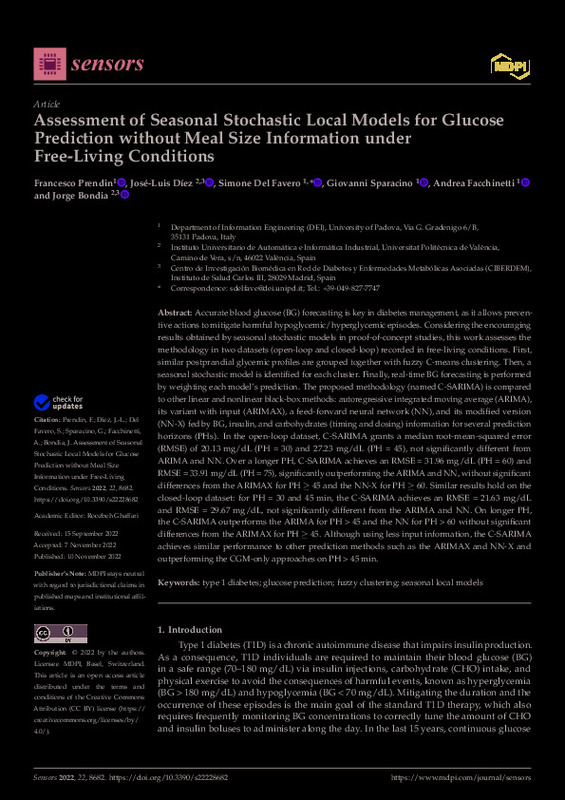JavaScript is disabled for your browser. Some features of this site may not work without it.
Buscar en RiuNet
Listar
Mi cuenta
Estadísticas
Ayuda RiuNet
Admin. UPV
Assessment of Seasonal Stochastic Local Models for Glucose Prediction without Meal Size Information under Free-Living Conditions
Mostrar el registro completo del ítem
Prendin, F.; Diez, J.; Del Favero, S.; Sparacino, G.; Facchinetti, A.; Bondía Company, J. (2022). Assessment of Seasonal Stochastic Local Models for Glucose Prediction without Meal Size Information under Free-Living Conditions. Sensors. 22(22):1-17. https://doi.org/10.3390/s22228682
Por favor, use este identificador para citar o enlazar este ítem: http://hdl.handle.net/10251/200254
Ficheros en el ítem
Metadatos del ítem
| Título: | Assessment of Seasonal Stochastic Local Models for Glucose Prediction without Meal Size Information under Free-Living Conditions | |
| Autor: | Prendin, Francesco Del Favero, Simone Sparacino, Giovanni Facchinetti, Andrea | |
| Entidad UPV: |
|
|
| Fecha difusión: |
|
|
| Resumen: |
[EN] Accurate blood glucose (BG) forecasting is key in diabetes management, as it allows preventive actions to mitigate harmful hypoglycemic/hyperglycemic episodes. Considering the encouraging results obtained by seasonal ...[+]
|
|
| Palabras clave: |
|
|
| Derechos de uso: | Reconocimiento (by) | |
| Fuente: |
|
|
| DOI: |
|
|
| Editorial: |
|
|
| Versión del editor: | https://doi.org/10.3390/s22228682 | |
| Código del Proyecto: |
|
|
| Agradecimientos: |
This work was partially supported by the project "A noninvasive tattoo-based continuous GLUCOse Monitoring electronic system FOR Type-1 diabetes individuals (GLUCOMFORT)" (initiative "PRIN: Progetti di Rilevante Interesse ...[+]
|
|
| Tipo: |
|









